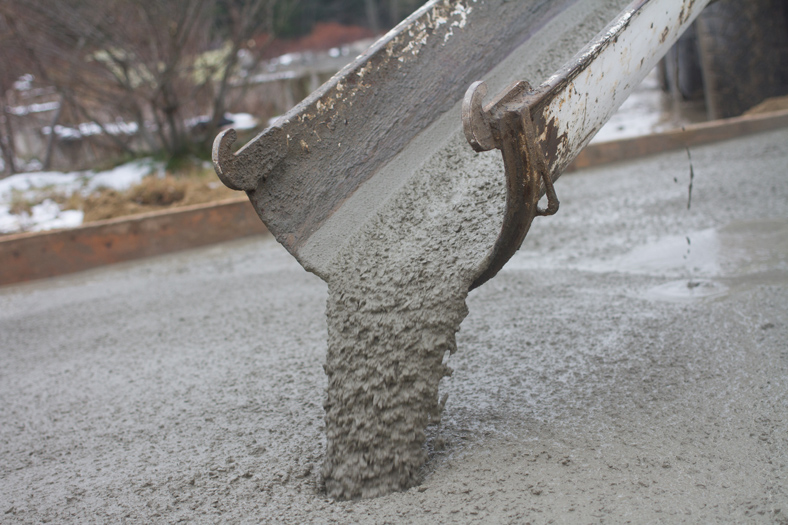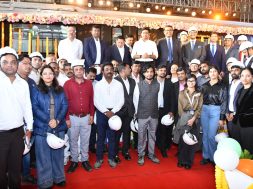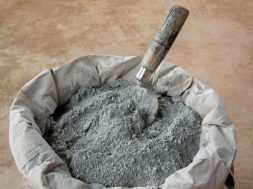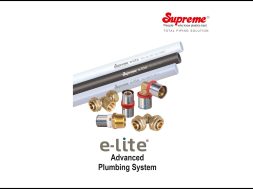Will my project benefit from control flow concrete?

A new type of highly flowable concrete bridges the gap between conventional and self-consolidating concrete.
Conventional concrete has been used as a building material since 1824. It works just fine for many building projects since it’s easy to produce and to deliver to the jobsite. However, it’s not exactly an easy material to work with. Concrete requires a tremendous amount of labour, time and heavy equipment just to move, place, and finish. With many general contractors looking to reduce costs and save time, they would certainly benefit from a concrete solution that could do just that.
Self-consolidating concrete came about, in part, to address this. It has high passing ability and it’s also self-levelling. This reduces the labour involved with pumping and placing of concrete. However, self-consolidating concrete is expensive to produce because it requires a specialised mix design with high powder contents and small coarse aggregates. And it doesn’t entirely solve the amount of labour on a job, because its sensitive mix requires extra quality control by the producer to minimise batch variability.
A new concrete category, control flow concrete, recently emerged to bridge the gap between conventional and self-consolidating concrete. It offers many of the desirable characteristics of each type of concrete, without their respective negative aspect. Like self-consolidating concrete, control flow concrete flows and places easily, without negatively impacting stability or segregation resistance. It also can be placed with minimal vibration, which helps to cut costs. And as an added bonus, it doesn’t require extensive quality control to produce, so it eliminates some of the labour costs that come with self-consolidating concrete. Furthermore, control flow concrete is manufactured using conventional mix designs, with lower powder contents and larger coarse aggregates, further reducing material costs.
Choosing the right type of concrete for the job
Before selecting the type of concrete for your project, it’s important to understand the flow characteristics of each, as well as the placement requirements of the project.
Creating control flow concrete
Good slump flow retention is necessary for transportation and placement of concrete. Superplasticisers can be used to disperse the cement particles and reduce the yield stress of the concrete. However, high doses of traditional superplasticisers can cause segregation. GCP Applied Technologies introduced CONCERA admixtures that produce segregation-resistant, high slump flow concretes using conventional mix designs. Using these admixtures allows for good slump flow, without having to use high doses of superplasticisers. This means that control flow concrete can be produced relatively inexpensively as compared to self-consolidating concrete.
Compressive strength
Control flow concrete has compressive strength that is equivalent to conventional concrete. The flow properties come from the chemistry of the admixture and not from water, so compressive strength is not negatively affected by the use of CONCERA admixtures.
Static yield stress
Static yield stress is the measure of the force required to start motion in concrete at rest. This information is helpful because the less effort required to move the concrete, the lower the physical strain on staff and equipment at the job site. As expected, conventional concrete has the highest static yield stress, meaning it requires the most force to start this type of concrete moving. As shown in Figure 1, control flow concrete requires roughly two thirds less force to start moving. Self-consolidating concrete moves even more easily, requiring a small fraction of the force to start it moving from a resting state.
Bingham yield stress
Another important measurement is Bingham yield stress, which measures the effort required to stop concrete once it has been moving. It is useful to have concrete that will come to rest easily. Recent tests, shown in Figure 1 showed that it is easier to begin the flow of control flow concrete compared to conventional concrete, and that control flow concrete stops flowing more easily than self-consolidating concrete.
Conclusion
Ultimately, control flow concrete shows considerable promise for reducing the tremendous physical effort—and associated labour costs and time—involved with using traditional concrete, without leaving concrete vulnerable to potential segregation. For many projects requiring highly flowable concrete, control flow concrete offers the best of both worlds: concrete that’s easy to work with, but without high concrete production costs and quality control costs. CONCERA admixtures for the production of control flow concrete are now available from GCP Applied Technologies.
For more details about CONCERA admixtures for control flow concrete technology, visit concera.gcpat.com
9
Cookie Consent
We use cookies to personalize your experience. By continuing to visit this website you agree to our Terms & Conditions, Privacy Policy and Cookie Policy.









